USER REPORT: A stitch in time … with an M9
by Kefyn Moss
One thing I don’t see very often are stitched images using a Leica camera. Maybe this is anathema to many Leica users or maybe it’s just that the camera is so often used for a different subject matter that doesn’t suit them. I used to own the brilliant Nikon D700 but for travel purposes, which forms a large portion of my photography, I was wanting something more portable. I travel light. Even with a D700, three lenses and a tripod I can go with only carry-on luggage for months at a time. I’m definitely a minimalist, so reducing the size and weight of my photographic equipment while retaining full frame is a high priority. I had considered the M9 before but couldn’t afford it and keep my Nikon at the same time, but I finally took the plunge, sold all my Nikon gear to pay for it, and bought the Leica.
Monastic Outlook #2, Zeiss 35mm, 10,814 x 4897 px (53MP)
Leica glass (new) was almost impossible to find at the time I was looking, and out of my price range or not what I wanted with the few models that were available. I opted for mostly Zeiss optics (I had to literally scour the world for these too, in the time I had before leaving on a trip to Greece) deciding on the 25/2.8 Biogon, 35/2.8 Biogon and 50/2 Planar.
[ad#Adsense Blog Sq Embed Image]
I also got a 90/4 macro Elmar second hand but used it far less than I thought I would. I have a variety of tripods and ball heads and normally use a Really Right Stuff head with the pano clamp and nodal slide, but this time, due to the small size of the lenses the accuracy of finding the exit pupil was not such a concern for me and I just took a lever release head and leveled the tripod. This still necessitated an Arca-style QR plate on the camera so I also shelled out for the RRS set which includes a replacement base (fits perfectly), L bracket and hand grip, which I found brilliant for hand held use (more ergonomic than the Thumbs Up IMO).
Monastic Outlook #4, Zeiss 25mm, 7039 x 4443 px (31MP)
I didn’t have a lot of time to familiarize myself with the camera before heading off for six weeks, but I was confident that it’s the photographer that takes the photos, not the camera, and I wasn’t going to blame the camera for my shortcomings. Some things I expected to be limiting, such as the high ISO performance and slow processor but high ISO isn’t a concern for tripod mounted shots, and the buffer/write speed? Frustratingly slow, which occasionally led to missed, or at least crippled, opportunities (waiting for the buffer when bracketing and watching the light starting to change … c’mon, c’mon) even though I tried to plan for it.
The metering was better than I expected (I didn’t expect too much having been used to Nikon’s accurate multi-pattern metering and having owned the lovely Olympus OM-4 with multi spot metering I find CW average to be a bit primitive on its own) but I bracketed a lot to make sure and I love how the camera automatically shoots the number of shots chosen when bracketing – this should be standard on all cameras! Manual controls were a joy to use in general and specifically I use the DOF scale on manual focus lenses for “f8 to infinity” which became my mantra for this type of photo. I haven’t had any issues with rangefinder calibration so selective focus using the viewfinder was a non-issue and focus lock is built in!
Calm Fortitude (this is actually an HDR pano for those that think HDR has to look over-the-top rather than to render highlight/shadow detail realistically), Zeiss 25mm, 7080 x 4499 px (31MP)
I don’t travel with a laptop, just a HyperDrive (although a MacBook Air would be OK), so I had to wait until I returned home before assessing the results. I wasn’t expecting the lack of an AA filter to be an issue, after all I wasn’t shooting fashion, but in a few cases moiré reared its head (the fences in the fish farms in “Klisova Lagoon” for example) and marred a potentially good image (desaturating the offending area didn’t often help and created more post-processing work).
The biggest annoyance however, and Matt Draper in his recent article seemed to have a similar experience, was DUST. The camera came with a dusty sensor and it just got worse with each lens change. Keeping one lens on the camera in street photography or portraits would reduce the problem significantly, but it is after all an interchangeable lens camera and the omission of some sort of sensor cleaning is, in my opinion, very remiss of Leica. For me this created a huge amount of work in landscape and architectural images during post processing. In (single) images taken in the latter half of the trip I have counted literally hundreds of dust spots that would show up on a large print – thank Adobe for the spot healing brush tool (and sync settings in Lightroom for multi-image stitches) is all I can say. And to answer the question “why not take sensor cleaning gear?” I would reply that: a) as I said I travel light so with the insane carry-on restrictions I can’t take cleaning fluid, and b) I have traveled with a D700 in a similar fashion with no dust problem (the mirror probably helps a bit too) so wasn’t expecting or prepared for the severity of it – when I did clean the sensor at home it took 3 or 4 “wet” cleans to remove some of the more stubborn crud!
Klisova Lagoon (the camera wasn’t vertical for this one), Zeiss 50mm, 10,765 x 3264 px (35MP)
There is inevitably some pixel loss with final image cropping, but to demonstrate finished file dimensions, I have included them with the relative image. Luckily I have an 8 core Mac Pro with 12Gb of RAM and a 30” NEC MultiSync monitor, so processing these huge files wasn’t too time consuming and the merge to pano in PS CS5 does a great job 95% of the time – no specialized software required anymore as far as I’m concerned.
Klisova Lagoon detail. Moiré does show up in some landscapes…
So is the M9 the best tool for stitched panoramas? Definitely not, as the frame-lines are not accurate enough for me to take sequences without building in more overlap error protection than I would normally use, increasing the time to take them, which is critical when the light is changing rapidly and already a limitation with that pitiful RAW buffer and slow write speed. But the low distortion lenses of small physical size and relatively simple design, the portability of the camera and system and the designers of stitching software all contribute to making it a usable tool for stitched panoramas and, as they are not the only photos I take, I am more than satisfied with the results. I hope you are too, but constructive criticism is welcome.
Thank you,
Kefyn Moss (and thanks Steve for providing the opportunities that you do).
Lasithi Plateau, Zeiss 50mm, 11,786 x 5161 px (60MP)
–
Lasithi Plateau crop. A nice rendering for this landscape to my eye…

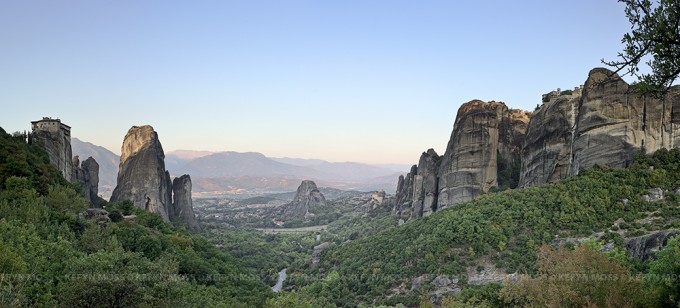
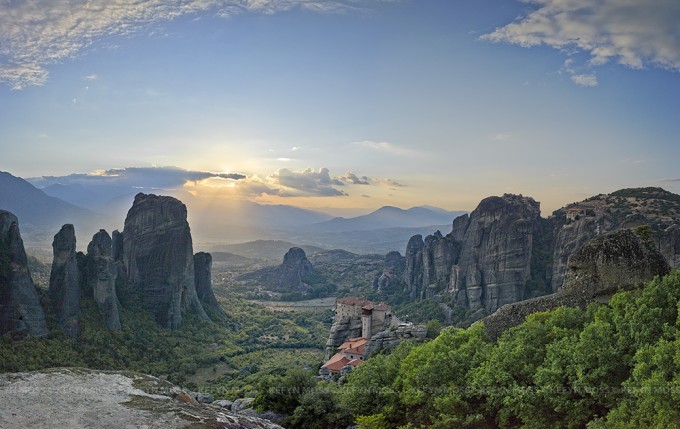
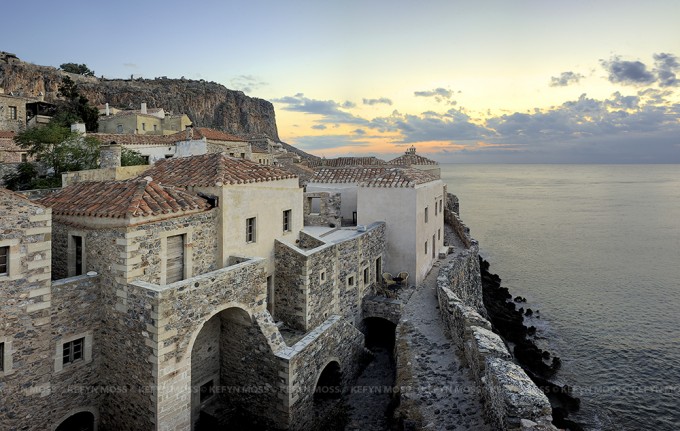

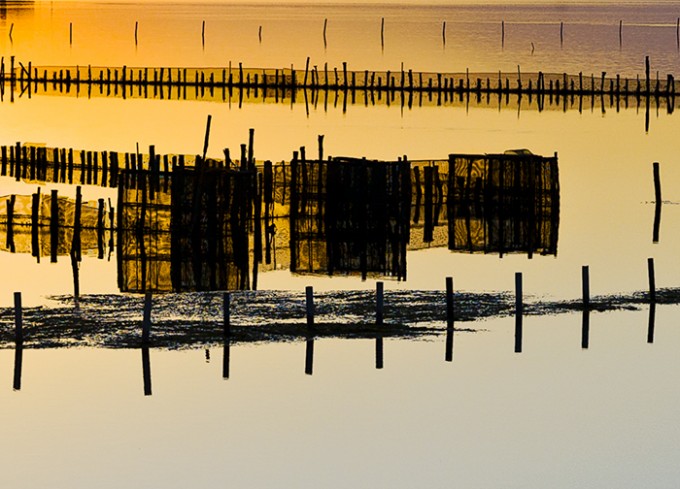
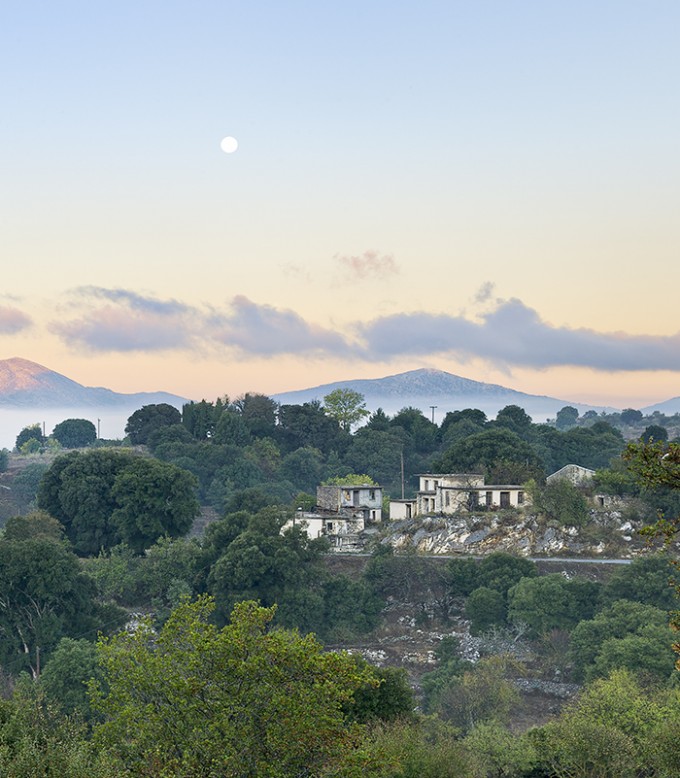
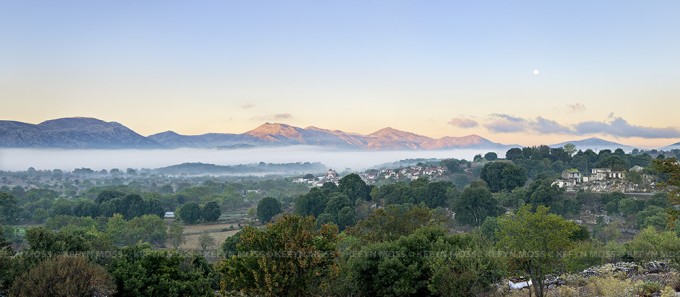


Thanks for this post and for your sample shots. I really appreciate you taking the time to post your experiences as I am pondering the RF as a backup or alternative to my (heavy) MF kit. I enjoyed viewing the images as well. So it sounds like the lack of accurate framing does not make this an ideal stitching kit, but I was wondering if you considered any click-stop panning head (e.g. Noal Ninja RD16)?…I’ve used this before switching to a non clicking RRS setup, but I do recall the RD16 speeds up the workflow quite a bit…but yeah, it adds to your kit weight. I think the workaround is simply to provide more overlap than you think you need, since memory is cheap these days.
love the images! I love landscapes, but oddly they are something i rarely do myself. i hear youon the dirty sensor comment. i’ve found the M9 a nightmare to keep clean, i have no technical proof to back up my speculation but i suspect that the small size of the m9 means that the sensor builds up a lotof static during actuations and then as a result attracts the damn stuff, my own attempts to use the M9 as a single body and to switch between 35/50/90 in the field have always ended up in a dust fest and eventually in the acquisition of a shop stock of v-dust cleAning kit. in the end ive gone for a second body (M7) to be able to minimise the amountof lens changes. when cleaning the M9 i find the trick is to use multiple fluids, use the anti static solution for at least 4 swabs and thn use the heavy duty smear away for 2-4 swabs. the arctic butterfly is also handy.
Many thanks for this post – since reading it I really want to try to do some panorama with my Leica equipment but am still totally confused on the nodal point readings… do you have any tips on how to set up the tripod or do you not bother with such readings? Many thanks in advance!
Nice article and images. I too like the low contrast look. Personally I think that the compactness of the camera, accuracy of focus at or near infinity plus the simple user interface outweigh the downside of having to clean the sensor. More importantly than all that is the fact that an M is a great travel camera and with it you made some very nice images.
Do you have a website with more images from your travels?
Despite frequent and regular visits to this site for at least the past couple of years this is the first time I’ve felt the need to comment.
These are good, but I like the lagoon shot in particular. Dull?, I don’t think so. Nothing going on?, so what! Love the muted colours, and I would not have known these were HDR if you hadn’t mentioned it, so based on the evidence not all HDR is garish, so I can no longer say “I hate HDR”.
Iain
Congratulations. Read some of the comments. I also (as some) prefer the more realsitic look, the less photshopped’ look. I think the photographs you v done here look great. I agree wiht Omer.
And the HDR was well done(I thought)
Thanks for sharing , I have a D700 and am thinking about a Leica. I travel some, and the compactness of a system becomes quite important when you do, I think
Keep up the good work
Best Regards
LaCapino
stuartweber.co.za
Great shots Kefyn.
Noticed your commenton not being able to take cleaning fluids on aircraft. You do know that you can get pre-soaked swabs?
PhotoSol do them http://www.photosol.com/store/pc/viewCategories.asp?idCategory=9
Not sure if other menufacturers produce similar products.
Thanks Owin,
Funnily enough I use Photosol swabs but had run out. Part of the problem was that I just didn’t expect it to be such a big problem – especially on a new camera. I just find a bottle of solution more versatile, if a lens gets smeared for example, but the swabs are very good so point taken.
I have posted a couple of stitched images from a M8 and 28mm elm form a recent trip to southern South Korea. A few post down from the top.
http://http://pacificwestside.blogspot.com
Amazing pictures – thank you for sharing your approach and the output. A quick example of 26 frames of Ilford 125 stitched into one: http://www.flickr.com/photos/rjselwyn/6636932113/in/set-72157628721940279
I like your pictures a lot. Similar to landscape shots I take. My wife makes me increase contrast a little bit over what you use (she’s my biggest critic; but it’s useful criticism) but I can’t find any fault with your work. And I like the fact that your HDR work does not look like the usual and easily spotted HDR work (which alway looks forced).
For wide shots I’ve found the Leica 28 Summicron better than stitching. Just my experience. I tried the Zeiss 21 but thought the shots had a little less pop than using the Leica lens. If I could ever find a copy of the new Leica 21 Elmar, I’ll give that a try.
M9 sensor dust; one of the features of Leica. Remember, you’ve paid extra for this which is why dust is not included with Canon or Nikon cameras. Just enjoy the fact that Leica has taken care of this often overlooked feature for you.
I hate HDR.
Beautiful Images with a unique signature all your own. Don’t listen to the “uninformed” saying they look dull. They have a beautiful pastel to they that is your unique style. I suppose some would say photographer Pete Turner’s images are too saturated. We all have different eyes and that is what keeps photography exciting. Note to gear heads: Cameras take pictures too, don’t forget. They are not just objects of desire! 😉
Thans for sharing your lovely vision!
Lovely work. I am an early riser and many mornings are beautifully muted. So
Sometimes to the point of revealing little color and contrast.
A challenging, creative time of day.
By the same token, the range of commentary here indicates (to me) a divergent artistic sensitively in the images. That in itself is a degree of success.
Regardless my very subjective opinion is one of pleasure in many of these images.
Thank you for braving the perils of posting and opening yourself to the mad, mad world of photographic opinion.
Alex
I am very bored by tiresome people that always feel they need to mention that they ‘hate HDR’. Useless pathetic, elitist haters. Why look at- and comment on- HDR images- if you hate them so much?? Do they walk around the Tate modern saying ‘I hate modern art’ in front of every picture?
I really like these shots. The second one is amazing- and I am sure the lower contrast would work well on large prints- you can see that there is a great deal more to the picture than what can be seen on a small scale.
Kefyn,
Lovely shots, just like the world usually looks at daybreak, or soon after! Must get myself an L-bracket, for my NEX-5N, and its Zeiss 25! Or the K-5 with its FA31, or the FA43. Sadly both APS-C format cameras, but the NEX sure can be part of a very light kit indeed!
Your panormas show that sensor size does matter in every way, no doubt about that! And the HDR set low (like you do) is the way I like it ;-)!
Hmmmzzzz, funny,
In the 1930 they opted for a camera called the Cirkut (5 till 16) which used humongous amounts of film and a rotating design in order to capture panorama’s. I just restored on of these panorama for the Municipal Archive of Venlo (the foto had been hanging out in the open for over half a century so it was bleached almost beyond recognition, but it was originally shot on firm and it contained (were it contained any detail at all) a remarkable amount of detail when I scanned 4 15 x 45 cm pieces of it at 1200 dpi. I could easily stich them together using modern software. Result a 326 Mp panorama made in 1930………how cool can that be. By the way it was made from the top of the Nedinsco tower (an optical company making periscopes and what not) that was more or less related to Zeiss at that (pre war) time. Ah, photorestauration has it’s upsides, btw on thye special page of my site is a 1958 panorama as well that was in better shape when it arrived (also in pieces). So you don’r need a M9 to make a panorama (but off course it can do that as well). The next pano I will shoot I will use a GX680 and a Ektar 100 film…….each negative will be about 45 Mp when scanned and I will have 8 of them in a full circle.
Kefyn, I like your work and your style. Your article was about stitching photos together, and you have done a superb job in that!! I have also taken some panos with the Leica M9, and with a good tripod and level, it is just as good as any DSLR for doing panos. Cheers! Scotty
Here is my version of sticker frames. Using leica m9 with 35 cron
http://www.salimphoto.com/Landscape/Landscape/17317274_5MCh2D#!i=1529731329&k=nQWpqWs&lb=1&s=A
On my first brief look I thought most of the pictures were a little flat. So went out and walked the dog and thought about my reaction, especially, as I process my pictures for a Technicolor feel. Returned and looked at the landscapes again and I really like Kefyn’s use of the delicate pallet of muted colors combined with the detail in the shots. I’m certain they would look excellent printed and think it’s time for me to explore using HDR for a more realistic less punchy colour pallet.
Thank you Kefyn for an excellent selection.
PS I use a Fuji X100 and shoot panoramas in HDR using raw. This becomes a very dreary, time consuming process even with a fast card, so I sympathise with M9 users with the same problem.
its funny how people can openly hate on people’s work online (i mean give non constructive criticism) yet they are too scared to link a site with their own work. i think most of these shots are amazing.. definitely special moments captured which is what photography is all about.
Seem to be a lot of negativety on this site recently, from the veiwers and owner unfortunately.
The light look fake to me !
Greg
I love your Kilsova Lagoon shot!
Absolutely breathtaking! The colours are so dreamy!
I personally never understood the really over processed looking scapes, yours however look so real in colour, so true to life. They look to me very close to the colours you would have seen when actually being there taking the shot.
Thankyou so much for sharing, inspirational work! 🙂
Thanks for all the comments. I have only just checked as it’s now morning here in Oz, and was surprised to see the article up and with so many comments already. I did ask for constructive criticism, but some seem to think their opinion is the same thing. I agree that the images might look a bit dull – compared to the usual over-saturated and contrasty fare dished up on many internet sites and when this has become the norm makes it hard to gauge a wide variety of images. But I process my photos to actually print them too and remember, these are 30-60MP images that are in fact quite high in local contrast when viewed very large (printed especially) so it is a bit inaccurate to judge a 0.3MP version in this case (maybe I shouldn’t have posted them either – always two sides to a coin). It is easy to shift that saturation slider to the right and up the contrast for more punch and far more difficult to portray something as I saw it (oh well I must be dull). The other factor is the time of day when most were taken, as I stated in the piece. If you have never been up at this time of day you would know that there is not a lot of “contrast” in diffused, soft morning light, which is why I like it.
Anyway, thanks for all the positive comments too. If you could only see the original files on a color-calibrated 30″ monitor or as a big print …
great work Kefyn, i wouldn’t worry about the comments given by a handful of dickwads on the internet who have nothing to post to prove their comments are valid in any way.
keep shooting.
Some very nice work in my opinion. I do find a bit of lack of darker tones (or contrast) in the “Monastic Outlook #4” and maybe the “Lasithi Plateau”, but on the other hand the lower contrast gives them more “peaceful” feel. I actually really like the way you processed the “Calm Fortitude”. Large prints from any of these must look great.
I will have a look at your work again when I get home to my calibrated Monitor (using just laptop right now).
Thank you for posting.
Really like Monastic Outlook #4, epic in it’s scale, beautiful to look at.
Love the Klisova Lagoon landscape, the asymmetric composition of the hills and the water structures almost creating a sine wave. Great stuff, thanks for sharing!
Great photos, and wonderful work.
With that said, I truly wonder how the new Nikon D4 would handle these sort of scenes, with its blazing speed, bult-in HDR mode, and excellent low-light capability.
I’m sure the D4 would really do great here. The blazing speed and ISO sensitivity would be very beneficial with these landscape shots on a tripod!
That landscape deserved at the least a 35 mm film camera + velvia 50. It lacks colour and detail.
It looks like a Bob Ross now.
Just get yourself a panning bed or clamp (doesn’t have to be expensive RRS either, plenty of great ones on Ebay from Sunway photo etc for 1/3rd the cost) and use the degree markings for the amount to pan each shot
Its fast and easy and you don’t have to worry about the framelines or even being able to see through the VF, just know for example that with your 50mm lens, each shot needs to be panned lets say 30 degrees for a 25% overlap. Then its just as simple as hit the shutter, rotate 30 degrees, hit the shutter, etc
Makes life very simple, and to boot you can use your tripod head to level the camera, then rotate the panning clamp around a perfectly level axis even with the tripod on less than perfect ground
As I said I have a panning clamp with markings but chose to go the simple and lighter route this time, so was commenting on the frame-lines more than anything. Under the same circumstances with a dSLR without 100% viewfinder the opposite would occur.
Very beautiful landscapes, always wanted to go to that place. Maybe this summer…
On the side of M9, one would think that they would include weather sealing for this type of camera (while this won’t remove the dust issue as you describe, it could help).
Great job with the stitching. Looks like you really worked hard for some excellent vantage points.
Brilliant photos! Meticulous detail, delicate color palate. Thank you for sharing them.
The slow processor is painful for this type of work. I also agree on the dirty sensor talk.. I’m always getting dirt when traveling. The Lagoon shot is the best. I like Calm fortitude also. The monastery seems a little small but I like it. I find the M9 really annoying for pano not having live view. .. but I don’t have a DSLR so have to deal with it.
I agree with Omer – they don’t have to look like Disney fantasies.
Very nice landscapes, and nice capture of the available light.
Amen.
Thanks for presenting these pictures. I like the serene tone of the motives.
“Nothing happens” = what a joke. That IS the thing with panoramas, that one can immerse himself into the motive and go mind-wandering ….
Part of the strange critism posted here may be due to the fact that you dared to critize some characteristics of the Leica M9 🙂
Is Kefyn = Kevin?
Wonderful landscapes, and they must be quite impressive on paper. Thank you for not succumbing to the prevalent and fatuous notion that landscapes should look like neon colored, black light Disney fantasies.
Omer…I think that between these night shots of Kefyn’s and the ‘fatuous notion that landscapes should look like neon colored, black light Disney fantasies’ that there is probably a happy medium….just sayin’.
sorry, meant to say ‘nice’ shots, not ‘night’ shots.
Considering the technique he used, it is safe to assume prints would impress more. But to your point of a middle ground between garish and subtly, consider the green on the right side of Monastic_Outlook4. Should that really be more vibrant or saturated? Well, perhaps I’ve seen too much irradiated foliage, skies, and rocks that are presented as artistic interpretations in photography.
Not sure if you’ve tried, but looking at each image individually (by clicking it) in a separate browser window will increase contrast and saturation.
Omer in the example you provided I would agree with you, the foliage in the lower light does not need to be more saturated….but look at the sky. Any drama in the sky has been lost due to HDR trying to pull all the details in….it’s flat. By the way, contrast and saturation are not the same….it’s the contrast I have a problem with more so than the saturation.
Great photos Kefyn. Great light.
Hi Kefyn, thanks for sharing these, I prefer a bit more contrastier landscapes, it makes them look more dynamic and emphasizes the quality of light but that is just personal taste, your work is very nice and hdr is very tastefully and skilfully done. Also kuds for making panormas with a rangefinder, inacurate framing and a lack of tilt-shift lens options probably contribute to much longer post-processing work.
Very interesting reading. The images are very good, but I think that especially the picture before the last may have been better with some more contrast. But that is just my personal preference.
Wow, the second pic reminds me a lot to valley of the wind in the anime Nausicaa, one of the most beautiful story ever. I wonder if that scene is where the author get the inspiration, Nausicaa is a greek name after all.
http://mmimageslarge.moviemail-online.co.uk/Nausicaa-Valley-of-the-Wind-15908_1.jpg
Nothing happens in these photos.
Hi Kefyn, thanks for sharing your experience. I’ve been meaning to do some stitched landscape work for quite some time, but never seem to get to it. I’m interested in your use of the M9 for stitching. Personally I shoot with a 5D2 and an M8, and I would have to say that size issues aside, the M8 would not be my first choice for landscape due to the inaccurate framing. With that said, your shots turned out great!
My only critique would be that I personally like more contrast/punch to my images, where some of yours are rather muted, no doubt due to the light (and tasteful) HDR treatment you used. That’s just my personal taste, so to each their own. Nice work!
Finally, someone else who uses an M9 for multi-shot panoramas!
You have some really nice panoramas there, particularly the Klisova Lagoon.
I’ve been using my M9 to create spherical panoramas. I used to use a Nikon D300 but found it too heavy to chuck in a backpack then heading off into the white stuff on snowshoes! So I sold it all to get an M9 via an M8!
It is a particularly slow camera to use especially when high-level winds blow the clouds along! I have found I can get away with using a Zeiss 18mm lens and a not too brisk shooting pace. For indoors I shoot HDR spherical panoramas, now that would try the patience of a saint! I can get away with a three shot set, two stops apart! Any more and it is too easy to lose track of where I was in the sequence!
The scenes are all nice. Sorry to say this – the images all look very dull, HDR or not.
Don’t agree, I like the softness of the images, it gives them that nice dreamy look.
Agree, very dull.
I hate HDR.
“I hate HDR”-that’s your personal preference, I’m sure that people would be delighted to see your own work till then maybe try to be more constructive if you want to criticize something
hdr is amazing if taken and processed correctly (not so easy). so guess he couldnt.
Hi Ady, you are an ass. Good day!
BTW great photos Kefyn
Hey Jonny, your mom send regards. Great week!
I could not disagree more Gurpreet.Photography is an art medium like painting. It is not necessarily meant to be a verbatim rendering of the scene. These photo have lovely soft lighting and a soothing quality. ART well done.
Well, I like the pictures. I like the HDR shot because it doesn’t look like an over processed HDR image. Thanks for sharing this story. I’ve also heard of many people who got their M9 from the factory loaded with dust. Sad.
Very nice photos. Funny, I just tried a photo stitch with 2 frames of Kodak Ektachrome with my Leica MP. Scanned on a Nikon Coolscan 500ED, the edges of the film strip cropped off in LR3 and then photo merged in Photoshop Elements. See below.
http://www.flickr.com/photos/37556068@N06/6736454017/sizes/l/in/photostream/